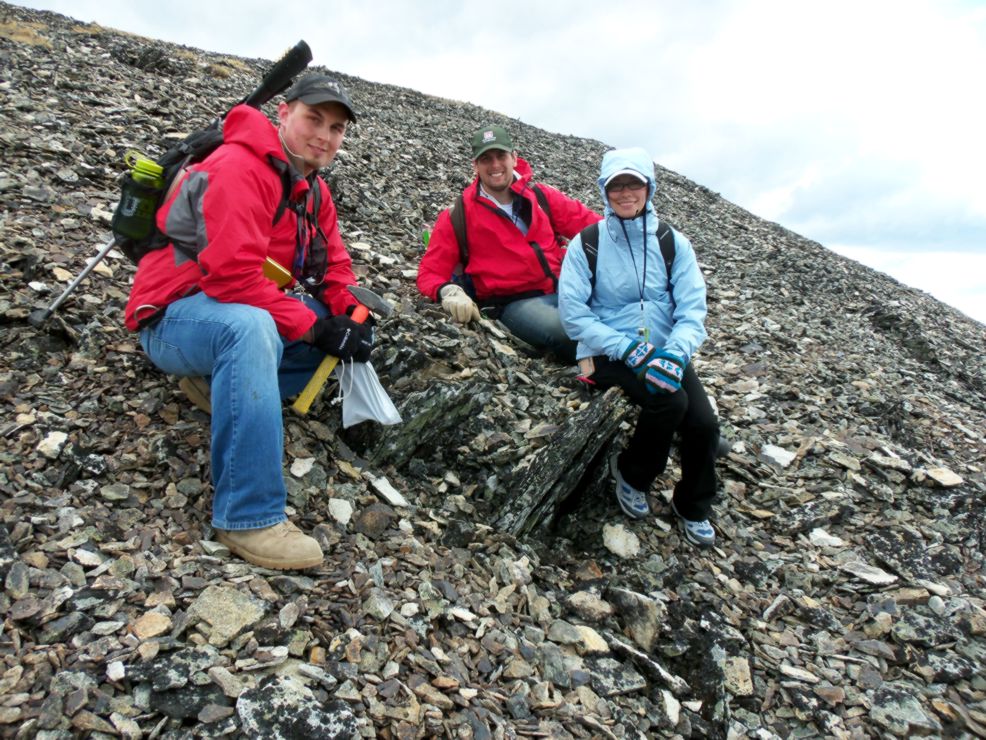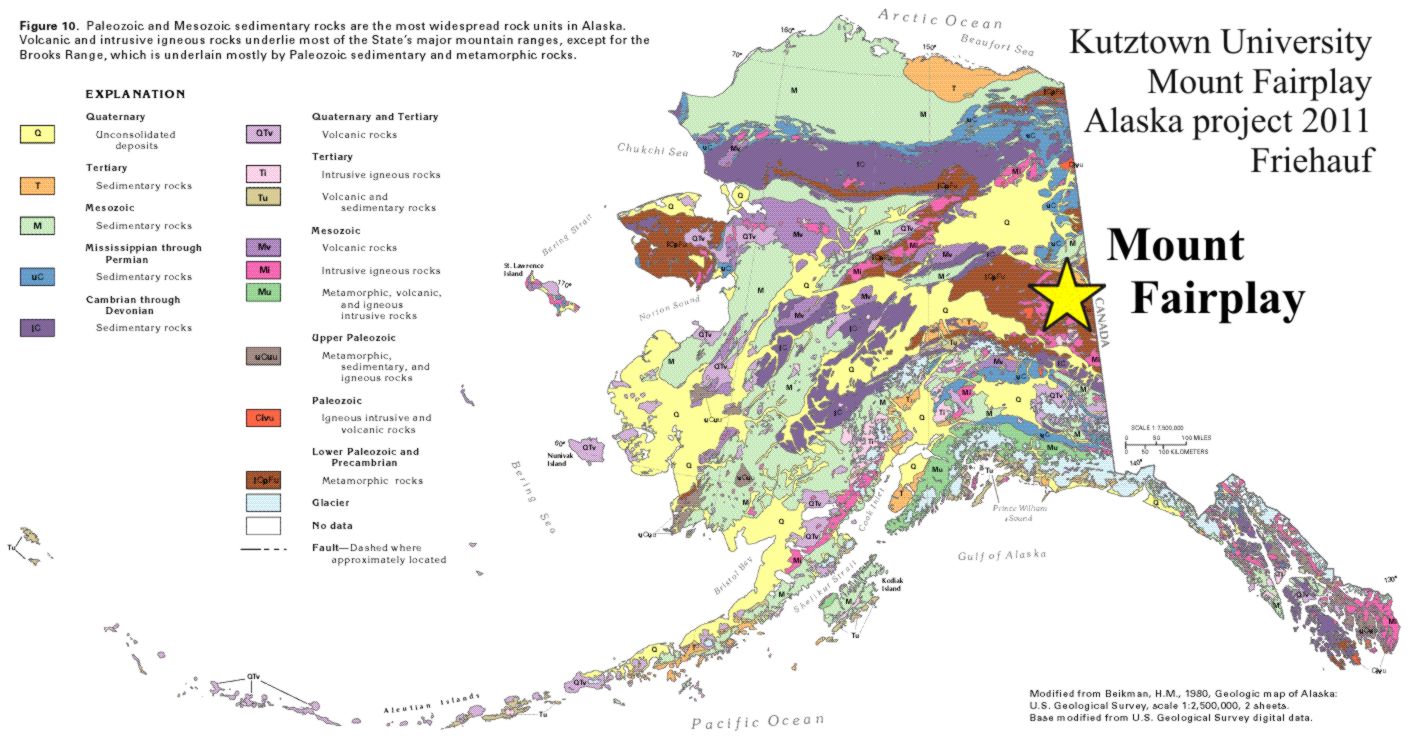
 Collaborative exploration of the Mount
Fairplay porphyry target - training undergraduate students while
searching for ore
Collaborative exploration of the Mount
Fairplay porphyry target - training undergraduate students while
searching for ore
Ruth, Daniel; Schlosser, Kenneth; Tkach, Melania; Friehauf, Kurt;
and McLeod, Rob, 2012, Collaborative exploration of the Mount
Fairplay porphyry target - training undergraduate students while
searching for ore [abs]: Mineral Exploration Roundup 2012 (23-26
January, 2012 - Vancouver, British Columbia, Canada).

In collaboration with Full
Metal Minerals, Inc., three undergraduate students and their
economic geology professor geologically mapped and sampled the Mt.
Fairplay porphyry target (70 km NE of Tok, Alaska). Students
working with high-precision GPS equipment, in predominantly
soliflucted rubble crop, distinguished six mappable units, collected
150 samples for assay, and made 20 thin sections for petrographic
characterization in the lab. Where firm bedrock did not crop
out, contacts were defined by upslope limits of boulders dispersed
by mass flow.
Field mapping delineated a basement core including a very
coarse-grained, granitoid augen gneiss, an anorthosite stock, and
unconstrained intrusions of hornblende biotite syenite and biotite
quartz monzonite. Biotite megacrysts (> 2 cm) occur locally
within the hornblende biotite syenite. Students panned the
stream that drains from the anorthosite, and ongoing microscopy of
the panning concentrate aims to identify the potential for ilmenite
within the anorthosite. Two suites of volcanic rocks were
deposited on the basement core. An early felsic volcanic suite
consists of flow-banded porphyritic latites, porphyritic quartz
latites, and rhyolitic tuff breccias. The felsic units are
strongly sericitically altered and contain minor disseminated
pyrite. A suite of andesitic pyroclastic rocks dominates
higher elevations and are only weakly propylitically altered by
actinolite-chlorite assemblages. Geochemical study and
continued petrographic analysis of samples are ongoing.
In addition to mapping and sampling the porphyry prospect, the
students developed an objective, quantitative system for assessing
vectors for zinc mineralization in phyllytic schist, and logged all
available drill cores from a prospect to determine proximity to the
mineralization center. Students further assisted company
exploration geologists in helicopter-supported soil sampling of
grassroots targets.
This “joint venture” project between academia and industry
represents a novel model for positive interaction in which young
students receive practical hands-on training, education, and
exposure to geology field experience – specifically in the methods
of mineral exploration – in return for field support. Mineral
exploration companies benefit from low-cost, supervised data
collection and establishing favorable ties with young geologists
likely to pursue careers in exploration. The entire mineral
exploration industry benefits by attracting motivated young
geologists into the field.


 Collaborative exploration of the Mount
Fairplay porphyry target - training undergraduate students while
searching for ore
Collaborative exploration of the Mount
Fairplay porphyry target - training undergraduate students while
searching for ore 
 Collaborative exploration of the Mount
Fairplay porphyry target - training undergraduate students while
searching for ore
Collaborative exploration of the Mount
Fairplay porphyry target - training undergraduate students while
searching for ore 
